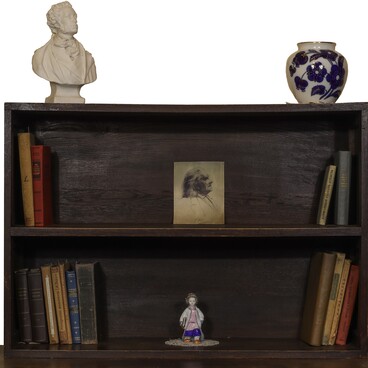Alexander Ilyich Leipunsky was a Soviet scientist of the first generation of national physicists to make a breakthrough in atomic science and technology in the USSR. Leipunsky was one of six students taken on internships by the “father of Soviet physics” Abram Ioffe. Alexander Ilyich later worked in Germany and in Ernest Rutherford’s laboratory at Cambridge University. In 1944, the Presidium of the Academy of Sciences of the Ukrainian SSR appointed Leipunsky director of the Institute of Physics and Mathematics, which had been evacuated from Kiev to Ufa.
Alexander Ilyich Leipunsky led research work “The Study of Uranium Fission” and was a member of the Nuclear Commission of the Academy of Sciences. The academician was involved in administrative work on the atomic issue and was appointed Head of Department of Laboratory B in Kaluga Oblast. It would later become the Obninsk Institute of Physics and Power Engineering, which would be named after the scientist.
After the successful testing of the first Soviet atomic bomb, Alexander Leipunsky initiated work on a new type of power reactor. He argued that “there is a considerable probability of using fast neutron reactors for successful reproduction of active substances” and proposed building a “low-power experimental fast neutron reactor of pure plutonium”.
In 1950, Alexander Leipunsky presented a report “Fast Neutron Systems” to the USSR Council of Ministers, which became fundamental for the development of the country’s new field of nuclear energy industry. A copy of it is kept in the Museum of History of the city of Obninsk, the country’s first science city. Laboratory B at the Obninskoye station became a closed secret research center, and Leipunsky was appointed the scientific supervisor of the project.
His work resulted in the start-up of four experimental and two industrial nuclear reactors. Alexander Leipunsky also developed nuclear power systems for nuclear-powered submarines and spacecraft. Project 705 nuclear-powered submarines and nuclear-powered spacecraft of the BUK and TOPAZ types were an important part of the country’s defense complex.
Alexander Ilyich Leipunsky led research work “The Study of Uranium Fission” and was a member of the Nuclear Commission of the Academy of Sciences. The academician was involved in administrative work on the atomic issue and was appointed Head of Department of Laboratory B in Kaluga Oblast. It would later become the Obninsk Institute of Physics and Power Engineering, which would be named after the scientist.
After the successful testing of the first Soviet atomic bomb, Alexander Leipunsky initiated work on a new type of power reactor. He argued that “there is a considerable probability of using fast neutron reactors for successful reproduction of active substances” and proposed building a “low-power experimental fast neutron reactor of pure plutonium”.
In 1950, Alexander Leipunsky presented a report “Fast Neutron Systems” to the USSR Council of Ministers, which became fundamental for the development of the country’s new field of nuclear energy industry. A copy of it is kept in the Museum of History of the city of Obninsk, the country’s first science city. Laboratory B at the Obninskoye station became a closed secret research center, and Leipunsky was appointed the scientific supervisor of the project.
His work resulted in the start-up of four experimental and two industrial nuclear reactors. Alexander Leipunsky also developed nuclear power systems for nuclear-powered submarines and spacecraft. Project 705 nuclear-powered submarines and nuclear-powered spacecraft of the BUK and TOPAZ types were an important part of the country’s defense complex.















